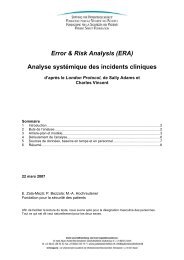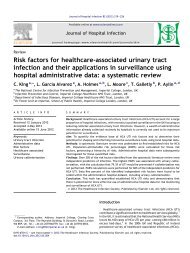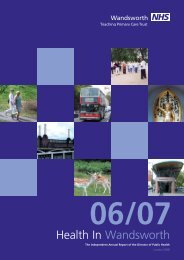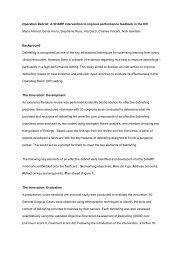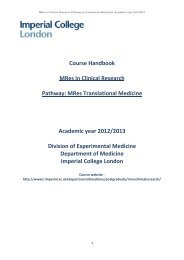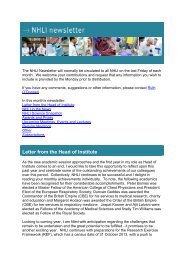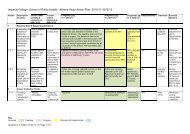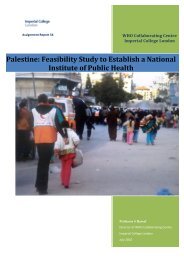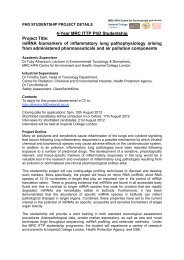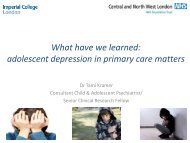QOF Plus Year 1 - Imperial College London
QOF Plus Year 1 - Imperial College London
QOF Plus Year 1 - Imperial College London
Create successful ePaper yourself
Turn your PDF publications into a flip-book with our unique Google optimized e-Paper software.
<strong>QOF</strong>+ report onsmoking in pregnancyProposed IndicatorsIndicator<strong>QOF</strong>+pointsPaymentstages+ SMOKING IN PREG 1. The percentage of pregnant womenwhose notes record their smoking status at the time of theirfirst booking appointment in primary care+ SMOKING IN PREG 2. The percentage of pregnant womenwho smoke whose notes contain a record that at the time oftheir first antenatal booking appointment in primary care theyhave been given smoking cessation advice and details of thelocal NHS Stop Smoking Services and the NHS pregnancysmoking helpline (0800 169 9 169)3 70-90%5 70-90%These indicators have been adapted from current smoking-related indicators in <strong>QOF</strong> and from the2008 NICE clinical guideline on antenatal care.BackgroundThe association between smoking and adverse outcomes of pregnancy for both infant andmother is well established. These adverse outcomes are described further below. Smoking inpregnancy is a potentially preventable activity, and therefore has important public healthimplications.Priority and relevance to national policyThe NHS Stop Smoking Services were initiated in 1999, and local services have had a particularfocus on reducing the number of pregnant women who smoke (DoH, 1998). The Department ofHealth’s white paper ‘Smoking Kills’ (DoH, 1998) set a national target to reduce the number ofwomen who smoke during pregnancy from 23% to 15% by 2010 and this target is reflected in theKey Performance Indicators of the Healthcare Commission. Additionally, the NHS Priorities andPlanning Framework (DoH, 2002) contains a target of delivering a one percentage point reductionper year in the proportion of women continuing to smoke throughout pregnancy. The frameworkfocuses especially on smokers from disadvantaged groups as a contribution to the national targetto reduce by at least 10% the gap in mortality between ‘routine and manual’ groups and thepopulation as a whole by 2010, starting with children under one year.39



